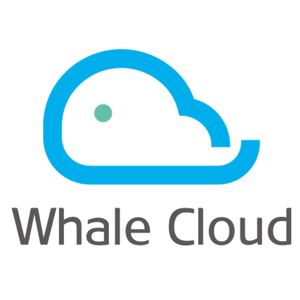Q&A with Whale Cloud CTO (International) Zhengcang XiaoQ&A with Whale Cloud CTO (International) Zhengcang Xiao

Q1: Whale Cloud has over 20 years of experience in the telecom industry. As the CTO, we'd love to hear your insights on the current challenges and future trends impacting the industry.
Whale Cloud's global presence has spanned over 80 countries on 5 continents and served more than 150 Communications Service Providers (CSPs). Throughout the years, the IT architecture for the telecom industry has witnessed significant transformation, evolving from a single monolithic system to front-end and back-end separation, then to domain decoupling, cloud microservices, and now integrating AI and data intelligence.
Traditionally, CSPs have constructed their IT systems using either the "Best of Breed" or "Best of Suite" approach. However, both models have their limitations. The "Best of Breed" model requires substantial integration and implementation costs, resulting in a high overall total Cost of Ownership (TCO). On the other hand, the "Best of Suite" model raises concerns about deep vendor lock-in, supply chain risks, and expensive future upgrades.
In recent years, the concepts of "digital overlay" and "greenfield stack" have gained popularity, but they may introduce long-term complexity to the IT landscape. Consequently, CSPs have been in search of a more ideal model for IT transformation that can address these challenges more effectively.
There has been a notable shift in the telecom industry, particularly among Chinese CSPs and international organizations like TM Forum. It is becoming evident that the future IT architecture will transition from the traditional "Best of Breed" or "Best of Suite" approach to a more advanced paradigm known as Best of Platform.
Q2. How do you interpret the concept of Best of Platform, can you share more details?
Absolutely. When it comes to an IT architecture, CSPs should prioritize several key requirements, including data-centric intelligence, agile and responsive capabilities to address business needs, adaptation to the growing trend of open source and cloud computing, and continuous improvement of security threat preparedness. CIOs need to define suitable architecture and vendor strategies to meet these requirements simultaneously. For solution & service providers like Whale Cloud, it is crucial to expand from software version delivery to the entire lifecycle of business and system architecture, maximizing the advantages offered by the cloud, open source community, AI, DevOps, and other relevant areas. We envision an IT architecture that will adopt a modular approach, utilizing standardized microservice components in a plug-and-play way. These components will be interconnected through APIs, creating an open platform with standardized capability and data interfaces accessible to external entities. This model of system construction is gradually gaining traction among Chinese CSPs and aligns with the Open Digital Architecture advocated by TM Forum.
The Best of Platform model emphasizes the flexibility of system construction, regardless of whether it involves a single vendor or multiple vendors. CSPs can leverage standardized components tailored to their strategies, allowing them to build systems that meet their specific needs.
Furthermore, the Best of Platform model aligns well with the principles of cloud-native architecture. It embraces modularization, standardization, and microservices as the foundations of cloud-native, rather than a shift-and-lift style, that is simply migrating existing IT systems onto a private or shared cloud infrastructure. This approach enables CSPs to fully leverage the benefits of cloud-native, such as scalability, agility, and resilience. So, the big difference is that we used to talk more about a static architecture, whereas the DevOps concept is to solve a dynamic service problem. The establishment of a platform can support both the agility of DevOps and the stability and security businesses require. That’s how the Best of Platform will work.
Q3. You mentioned cloudification and cloud-native. How do you view the cloud transformation of CSPs? What are Whale Cloud’s practices in the direction of cloud-native IT?
Cloudification and cloud-native have become prominent topics. Many players in the industry are adopting cloud-native concepts to build their products and systems. Whale Cloud has gained valuable experience and insights from both the Chinese and international markets. I will share it with you in four aspects.
IT transformation with cloud-native is a must-have for CSPs today. Traditional businesses in the telecom industry often face development bottlenecks, prompting CSPs to explore new directions. The ability to innovate and respond quickly to uncertainty, at a low cost and high efficiency, has become crucial. Cloud computing offers on-demand usage, elasticity, and flexible scaling, making it an ideal technical solution for CSPs to drive business innovation.
Cloud-native IT transformation should be oriented towards creating clear business value. Some projects may adopt a cloud-native architecture but fail to generate actual business value. Simply migrating IT systems to the cloud using a "lift and shift" approach is not enough. It is important to decouple large monolithic applications, establish a closed-loop autonomous microservice center, and implement standard open APIs. This framework enables end-to-end DevOps and facilitates application migration across different cloud platforms.
Infrastructure varies significantly across regions and countries, resulting in differences in the choice of cloud infrastructure. Whale Cloud has explored various Hybrid Cloud models. In domains characterized by rapid changes or on-demand requirements, such as front-end channels, eCommerce platforms, data analysis, or new business initiatives, public cloud capabilities are often leveraged. For relatively stable backend domains, a private cloud with flexible migration capabilities is deployed. Additionally, the Hybrid Cloud model can also be leveraged at the solution level, such as our Digital Marketing Cloud, which supports on-premise application deployment to protect privacy data. In the meantime, marketing activity templates that need continuous innovation and iterative changes are provided as subscriptions based on the public cloud.
Unlike other hyperscalers, Whale Cloud has a relatively concentrated R&D presence, while our customers are distributed worldwide. In recent years, we have invested in achieving end-to-end DevOps in hybrid cloud environments, improving CSPs’ business perception. This involves building an open platform, exposing more backend capabilities, integrating them into our shared development platform (DevStudio) based on public cloud infrastructure, and extending DevOps pipelines to customer sites. This approach allows for closed-loop scenarios at customer sites, significantly reducing time to market.
About the Author
You May Also Like











.png?width=300&auto=webp&quality=80&disable=upscale)


_1.jpg?width=300&auto=webp&quality=80&disable=upscale)